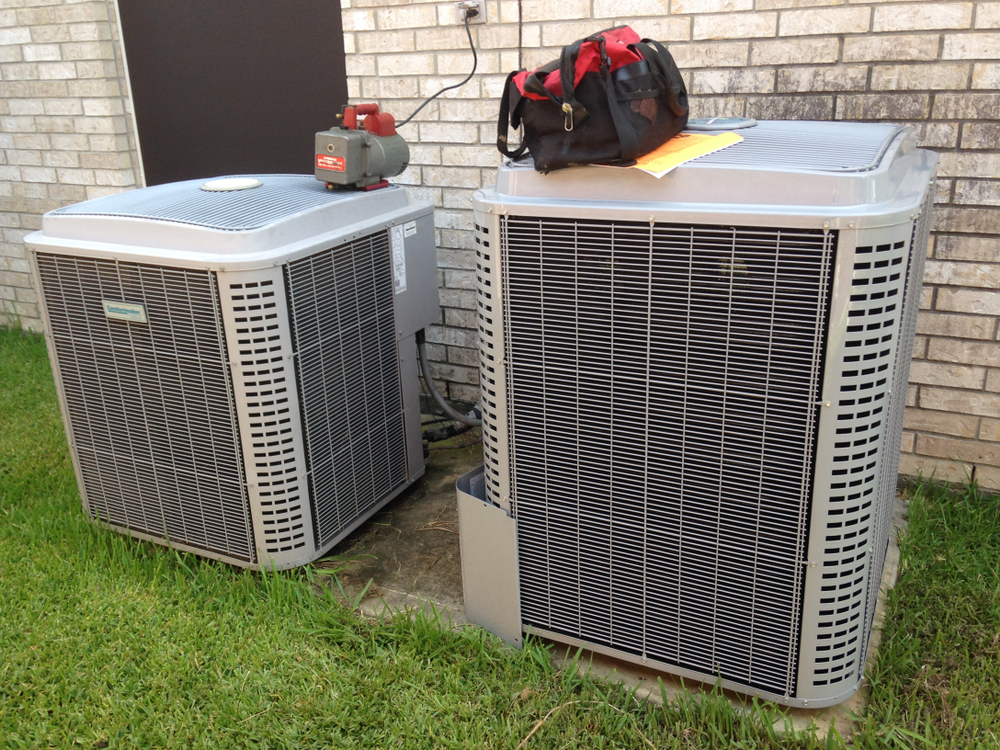How Do Home Air Conditioners Work
Central air conditioners have become synonymous with comfort, especially during the scorching summer days. These systems circulate cool air through a network of supply and return ducts, providing a pleasant atmosphere in homes and businesses. But how do they achieve this comfort? Let’s break it down.
Essential Components of a Central Air Conditioner:
- Compressor: Considered the heart of the cooling cycle, the compressor pumps the refrigerant to the condensing coil in the outdoor AC unit.
- Condensing Coils: Here, the refrigerant gas releases the heat it accumulated from indoors, transforming into a high-pressure liquid.
- Expansion Valve: This valve causes the high-pressure liquid refrigerant to revert to a low-pressure gas. This rapid pressure decrease cools the refrigerant, prepping it to absorb indoor heat.
- Evaporator Coils: Located indoors, these coils come in contact with warm air from the house. The refrigerant inside these coils absorbs this warmth, leaving the air cool.
- Air Handler/Blower: This mechanism circulates the newly cooled air through the home’s duct system.
- Air Filters: Before recirculation, air filters trap dust, allergens, and other particles to ensure you breathe clean, cool air.
- Thermostat: This is your control panel. It communicates your temperature desires to the AC system, turning it on or off based on the indoor temperature.
As the system operates, it continually cools and dehumidifies the indoor atmosphere, ensuring a comfortable living or working environment.
Central Air: An Overview
Central air conditioning is more than just cooling; it’s about efficiently distributing that coolness throughout an entire building. This system starts with the outdoor unit cooling the refrigerant, which then moves indoors. As warm air passes over the chilled evaporator coil, heat is absorbed, and cool air gets distributed throughout the space via ductwork. Controlled by a central thermostat, central air ensures consistent temperatures in every corner of the building, making it an optimal choice for larger spaces.

A Brief History of Air Conditioning
While we might think of air conditioning as a modern luxury, the idea has ancient roots. Romans, for instance, utilized aqueduct water to cool their homes. The real genesis of contemporary air conditioning, however, started in the 1830s with Dr. John Gorrie’s ice-making machine.
The pivotal moment came in 1902 with Willis Haviland Carrier’s invention, designed to address a humidity issue at a Brooklyn publishing company. Carrier’s system not only controlled humidity but also introduced the concept of temperature control, heralding the dawn of modern air conditioning.
How Air Conditioners Have Changed Over the Years
Air conditioning technology has evolved dramatically. Initially, AC units were bulky, expensive, and consumed significant energy. They were luxury items reserved for the elite or specific industries.
It was only around the mid-20th century that AC units became more accessible to the general public. With the 1970s energy crisis, a renewed emphasis on efficiency arose, introducing the SEER ratings and regulatory standards for ACs.
Today, air conditioners are efficient, versatile, and feature-rich, often integrated with smart technology. They’re also more environmentally conscious, using eco-friendly refrigerants.
Types of Air Conditioners: A Snapshot
While central air conditioners are popular, there’s a plethora of AC types available:
- Ductless, Mini-Split ACs: Suitable for specific room cooling.
- Window Units: Ideal for single-room cooling.
- Portable Units: Mobile versions of window units.
- Hybrid/Dual Fuel ACs: Intelligent systems toggling between fossil fuels and electricity.
- Geothermal Systems: Utilize the earth’s consistent temperature.
- Smart ACs: Tech-savvy systems controlled via mobile devices.
The perfect AC type hinges on individual requirements, including the space’s dimensions, architectural design, climatic conditions, and budgetary considerations.
Achieving Perfect Air Conditioning with Apple AC & Heat
When it comes to installing the ideal AC system, Apple AC & Heat has it down to a science:
- Initial Consultation: Understand the client’s specific needs.
- Home Evaluation: Assess the property to determine the best AC fit.
- System Selection: Offer recommendations based on the findings.
- Professional Installation: Guarantee optimal setup and functionality.
- Ongoing Support: Ensure the system’s long-term performance.
With Apple AC & Heat, comfort and efficiency are always at the forefront. Whether it’s a scorching summer day or a humid evening, rest assured that efficient cooling is just a call away.



